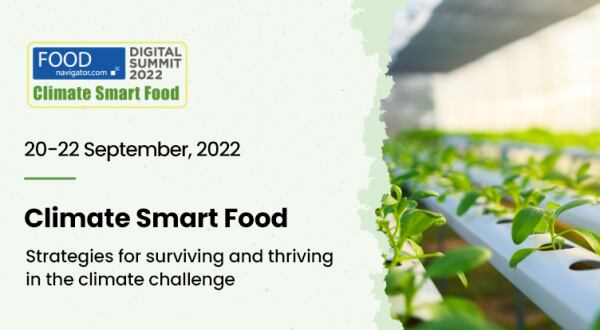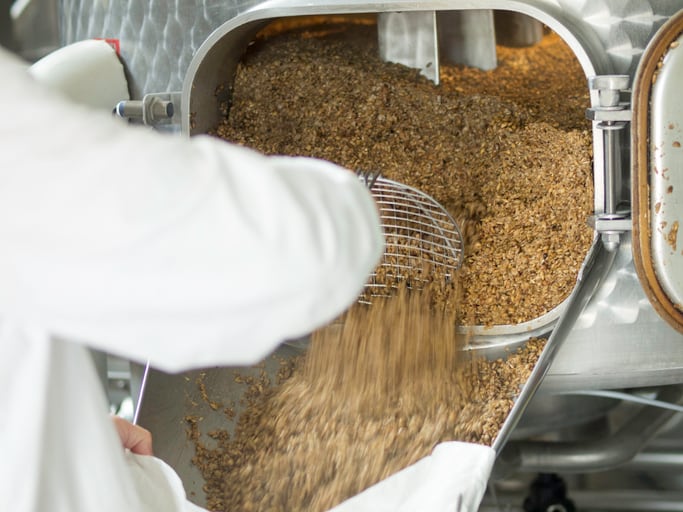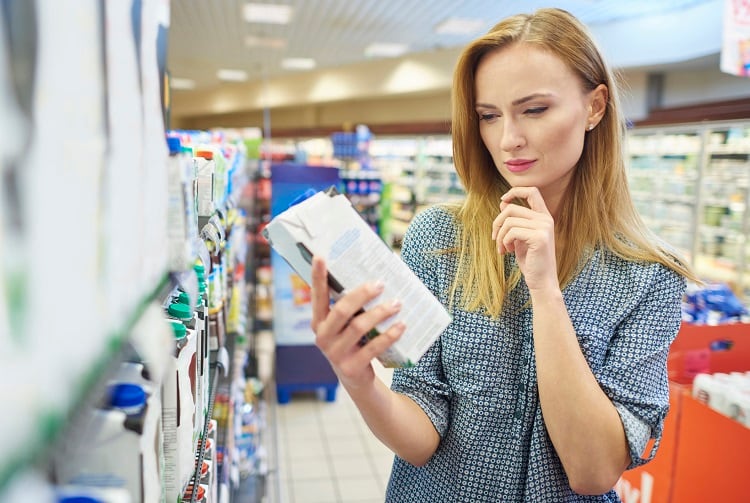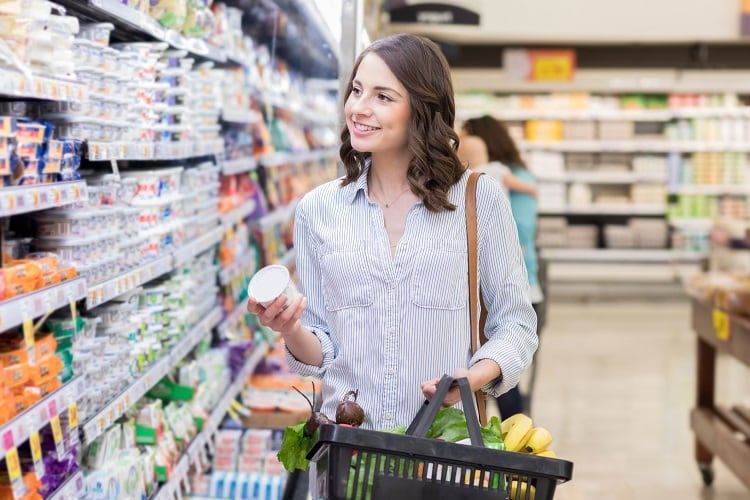Companies have traditionally steered clear from marketing products that are made with otherwise discarded ingredients explicitly as ‘upcycled’ to their end consumers.
But there is plenty to suggest shoppers are specifically seeking out these products - and are prepared to pay more for them - as concerns about the environmental impact of food waste mount.
Upcycled foods use ingredients that otherwise would not have gone to human consumption, are procured and produced using verifiable supply chains, and have a positive impact on the environment.
A panel of experts told the digital event, which you can watch on demand here, that by taking production side-streams and by-products, upcycling innovators are ensuring that good nutrition doesn’t go to waste. And as well as benefiting the environment, upcycled foods also offers companies potential new business opportunities and revenue streams.
“We really see opportunities in upcycling ingredients and upcycled food products,” said Aurora Giribuola, global innovation marketing lead at IFF. For example, through its partnership with Dutch start-up, PeelPioneers, the supplier is utilizing fresh orange peels that are naturally rich in essential oils and that would otherwise be discarded from retail settings to create ‘Upcycled Orange’ - one of 10 IFF products certified by the Upcycled Foods Association in 2021 from across its Scent, Health & Biosciences and Nourish divisions.
Giribuola explained that IFF’s ‘Re-imagine Waste’ programme aims to leverage more circular food design solutions with a focus on upcycling and maximizing resources in order to help its customers achieve their sustainability goals and ambitions.
Upcycled ingredients, as well as being implicitly sustainable, can bring multiple benefits to products formulations, said Dan Kurzrock, Co-founder & CEO of Regrained, which takes brewers spent grain and from that makes a powder which is used by manufacturers in a host of sweet and savoury applications like upcycled cookies, upcycled ice cream and even upcycled pasta. “This is a hero inclusion,” he said. “It's bringing nutritional and flavour attributes to a product that would have otherwise not have had them. Even in a bread recipe, where the average inclusion is about 15% of the finished formula, you can typically unlock a dietary fibre claim. It also brings unique flavour. It's got a complex, toasty, nutty profile that is like an elevated wholegrain."
Discarded ingredients have potential use in meat alternatives, according to Trond Løvdal, researcher at The Norwegian Institute of Food. He gave details of a project, in partnership with the Belgian ILVO research institute, which used discarded vegetables to create ‘tasty and healthy’ meat-free burgers.
The researchers took imperfect root vegetables, peas and mushrooms and processed them to make a fibre-rich ingredient which could easily be used as a functional ingredient in various recipes.
"Our industrial partner, who is a global market leader in prepared vegetables has an annual production of 270,000 tonnes,” he said. “They aim to reduce any avoidable food waste by 50% by 2030. That will lead to 70% reduction in their C02 emissions. The implementation of the technologies developed by our project will contribute significantly to their goal.
“We hope that we can create an outlet for the locally-derived side streams and not be dependent on the imports of soy, for example, to enable what I call true valorisation of side streams and waste.”
Cross-sector collaboration key
The panel heard from Dr Alexandra Leeper, Head of Research and Innovation at Iceland Ocean Cluster, which is seeking innovative projects that can support sustainable food security and 100% utilisation of valuable aquatic resources.
"This is about finding innovative ways to use not just the fillet of the fish but also creating value from the skins, the heads, the bones and all these bits which in more modern times have been thrown away and wasted,” she revealed. Cross-sector collaboration will be key in the evolution of upcycled foods, she stated, while offering companies potentially lucrative new business opportunities and revenue streams.
“We have products including leather created from fish skin. This takes a product that might otherwise have been thrown away to create a product that's worth about US$50 per kilogramme.
"Other clients are biomedical companies using Atlantic cod fish skin as a wound dressing for burns and diabetic sores... Another project is with a company creating kitchen tiles from fish scales.
"Others are extracting collagen and gelatine from fish skin for nutraceutical and health food products. Even energy drinks coming onto the market that are containing these parts of fish that would otherwise be thrown out.”
What do end consumers want?
There’s also evidence that more consumers are specifically seeking out upcycled products.
Launches of food and beverages containing upcycled ingredients rose by compound annual growth rate of 122% in the five years to 2021, according to a report from Innova Market Insights. This figure was higher than products using recycled plastic in packaging (59%) and those carrying carbon-emissions claims (47%).
Nearly half of consumers surveyed by Innova globally added they are actively trying to cut food waste. Some 62% said they are willing to pay more for food and beverage products that are dedicated to stopping food waste.
"Upcycling is a positioning tool that is very intuitive for people once they are educated about it,” observed Kurzrock. “There's lots of great research indicating more consumers want to buy more upcycled foods and are willing to pay more for them. We are seeing an increase in sales of upcycled products but it's important to note that these are early days.”
Upcycling’s primary appeal is its ability to cut waste and the resulting emissions. Global emissions from food range between 6 and 10 per cent, and a third of food produced globally each year – around 1.3 billion tonnes – is currently wasted.
“This is an opportunity for brands to tell the story on how upcycled ingredients have been incorporated in their products and a way to gain consumer trust as they can prove that they make efforts to reduce their environmental footprint,” added Giribuola.
Re-branding needed?
As upcycled products evolve, they may not even be looked upon as side streams or by-products, the experts agreed.
“If we're successful we're going to move towards where it doesn't need to be talked about as upcycled,” said Kurzrock. “It's going to be expected that we are putting all foods to their highest and best use. I think we're moving towards a food system where we don't need to talk about this as something we should do; it's just expected and we're creating better, more sustainable, more delicious products as a result.”
Løvdal added: “We need to stop talking about waste and side streams and by-products and just consider it as another raw material.”
Missed our panel on upcycling? Or any other content streamed the Climate Smart Food broadcast? Don’t worry, it’s all available on demand. Click HERE to view the programme and HERE to register and view at your leisure.






